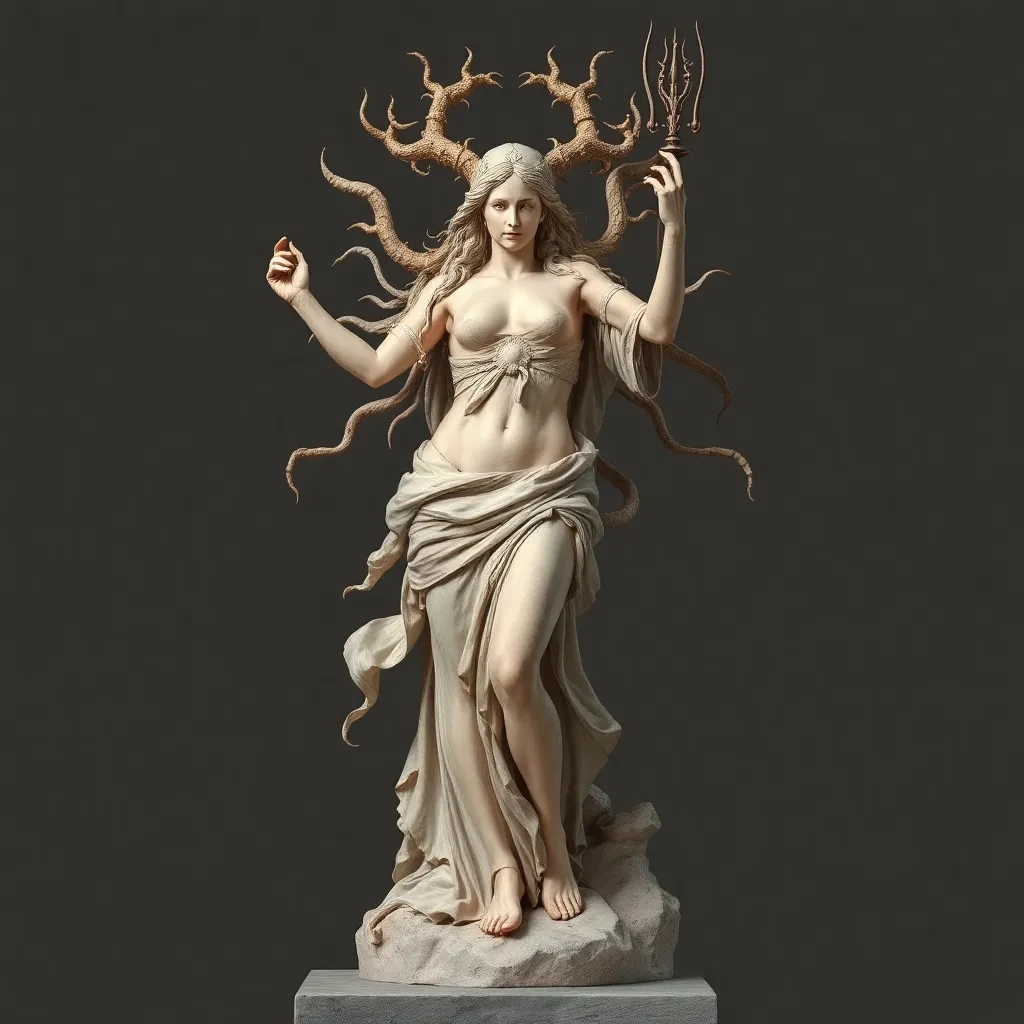From Greek to Roman: Examining the Adaptation of Empusa in Roman Myth
I. Introduction
Empusa, a fascinating figure in Greek mythology, is often depicted as a shape-shifting demon who preys on young men. This mythological entity, rooted in ancient lore, has intrigued scholars and enthusiasts alike. The purpose of this article is to explore the transition of Empusa from Greek mythology to her Roman counterpart, examining how cultural shifts influenced her representation and significance.
Understanding these adaptations is crucial, as they reveal the interactions between cultures and the ways in which mythological figures evolve over time. This article will delve into Empusa’s origins, her transformation in Roman mythology, and her lasting influence in later traditions.
II. The Origins of Empusa in Greek Mythology
Empusa is primarily mentioned in the works of the ancient Greek playwright Euripides, notably in “The Ghosts.” In this context, she is depicted as a seductive and dangerous figure, often associated with the underworld and the supernatural.
In Greek folklore, Empusa serves various roles, primarily as a demon who embodies fear and temptation. Her significance lies in her ability to manipulate and deceive, drawing victims into her traps. The characteristics associated with Empusa include:
- Shape-shifting abilities
- Connections to the underworld
- Associations with seduction and danger
III. The Cultural Context of Greek Mythology
The development of myths in Greek culture was heavily influenced by various factors, including religion, social norms, and philosophical thought. Mythical figures like Empusa were not merely stories; they reflected the values and fears of the society that created them.
Empusa’s place within the pantheon of Greek deities and spirits demonstrates the complex interplay between the divine and the mortal. She exemplifies the fears surrounding female sexuality and the dangers of temptation, making her a significant figure in discussions about morality and ethics in ancient Greece.
IV. The Roman Adaptation of Mythological Figures
Roman mythology is characterized by its syncretism, blending elements from various cultures, particularly Greek mythology. The Romans adapted numerous Greek myths, often altering characters and narratives to fit their own cultural values.
The process of adapting these myths involved:
- Redefining characteristics to align with Roman virtues
- Integrating local legends and beliefs
- Creating new narratives that reflected Roman societal structures
Key differences in the portrayal of mythological figures often included shifts in moral implications, with a stronger emphasis on duty and civic responsibility in Roman interpretations.
V. The Transformation of Empusa in Roman Mythology
As Empusa transitioned into Roman mythology, her characteristics and roles underwent notable changes. While she retained her shape-shifting abilities and connections to the supernatural, her portrayal evolved to reflect Roman values, which emphasized order, discipline, and virtue.
Roman adaptations often presented Empusa as less of a fearsome demon and more as a figure embodying the dangers of unchecked desires. This transformation highlights the influence of Roman beliefs, which sought to control and channel human impulses rather than celebrate them.
Comparatively, other Roman adaptations of Greek deities, such as the transformation of Aphrodite into Venus, illustrate a similar trend of redefining the narrative to fit societal expectations.
VI. Empusa’s Representation in Roman Literature and Art
Empusa appears in various Roman literary sources, including works by Ovid and Virgil, where her character often serves as a cautionary tale. These texts typically emphasize her seductive nature and the consequences of succumbing to temptation.
Artistic depictions of Empusa in Roman culture further illustrate her transformation. She is often portrayed in ways that highlight her dual nature as both alluring and dangerous. Common artistic themes include:
- Visual representations of her shape-shifting abilities
- Imagery emphasizing her connections to the underworld
- Symbolic representations of temptation and danger
The impact of these representations on public perception was significant, as they reinforced societal norms surrounding morality and virtue.
VII. The Legacy of Empusa in Later Mythological Traditions
Empusa’s influence extends beyond Roman mythology, impacting subsequent mythologies and folklore across cultures. Her archetype as a seductive figure who embodies danger can be seen in various forms, such as Lilith in Jewish folklore and the succubus in medieval European tales.
Comparisons with other mythological figures reveal common themes surrounding female power and seduction. The enduring relevance of Empusa in modern interpretations often reflects contemporary societal issues regarding gender and sexuality, showcasing her adaptability as a mythological figure.
VIII. Conclusion
In summary, the examination of Empusa’s transformation from Greek to Roman mythology highlights the complexities of mythological adaptations. Through this exploration, we see how cultural values and societal norms shape the portrayal of mythological figures, influencing their significance across different eras.
The significance of mythological adaptations lies in their ability to reflect the evolving beliefs of societies. Empusa’s journey from a fearsome demon in Greek culture to a more nuanced figure in Roman mythology underscores the power of storytelling and its capacity to adapt to changing societal contexts.
Ultimately, Empusa serves as a reminder of the enduring nature of myths and their capacity to address fundamental human concerns, making her a relevant figure in both ancient and modern narratives.



